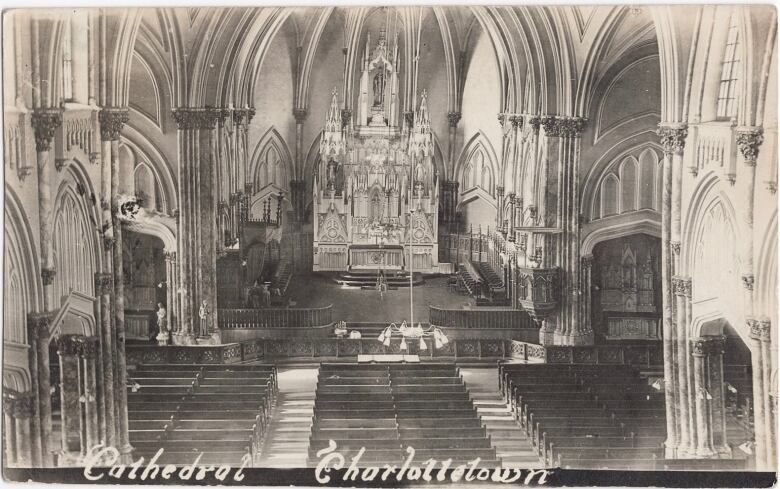Postcards from early 1900s a tribute to man's love of P.E.I.
'For me, it's just been a way of getting to know the Island better'

Phil Culhane has lived in Ottawa his entire life, but Prince Edward Island has always been close to his heart.
His life-long love of the Island led him to collect around 1,750 postcards of the province. He also researches the cards in an effort to learn more about P.E.I.'s history.
"For me, it's just been a way of getting to know the Island better," he said.
"I went there as a boy, regularly back in the '70s and '80s and just sort of fell in love with it. And the postcards right now have been really a way of getting to understand the social history and the geography and the business life and everything of pretty much the first half of the 20th century."
It all began last June when he bought about 600 postcards from a Halifax card collector. His collection has been growing consistently ever since then. Many of them are more than 100 years old.

"The Prince Edward Island that gets shown to tourists is very much Cavendish-focused with a little side of Charlottetown," Culhane said.
"But the Island was much more balanced 100 years ago. Tignish, Alberton, Montague, Souris — these were larger centres, so there's postcards from all of these places, and it's giving me sort of a broader sense of all the way around the Island from East Point over to North Cape because there were cards from all of these areas."
Sharing postcards online
Now, he's scanning and sharing his postcards online. More than 1,200 cards are on his website so far, and he's still working on getting the rest up.

"It's up there for me primarily for other researchers. But it's also up there for anyone who lives in P.E.I., who loves P.E.I., who just wants to have this touch point of history to just look at and enjoy. And I've had people email me thanking me just because they can look at these photos and see a Prince Edward Island that in some cases is largely forgotten today."
Highlights
He has many favourites.
"There's a photo of a small general store in Tignish. GA Shelfoon general store in Tignish. And Shelfoon was — I believe — one of the first Lebanese immigrants to Prince Edward Island. So, a card like that is interesting on its own, but when you dive into it, it becomes a fascinating piece, just a thread in the social history of Prince Edward Island."

"The neat thing you know … every picture's worth 1,000 words, but when you flip over the picture, you've got another story on the back," he said.
"And one of those postcards I have was written in Morse code. It was from a husband to his wife, I suppose. Or a beau to his girl. One of the two. And I had a friend who knows Morse code, and actually translated it into English. It's just a sweet little love message from the one to the other. That was kind of adorable."
According to the Morse code translation shared on his website, the message says: "Excuse view of church but just to L U madly my pinchbug hunny."


Another card which stands out to Culhane is called "The First P.E. Islander." The man also appears on another card collected by Culhane which identifies him as a First Nations man.
"It's just stunning," Culhane said.


"I've collected my entire life, and I realize these things are just passing through, and it's sort of my job to take care of them while I have them."
Culhane said P.E.I. is his "spiritual home," and it's the place where he feels more at peace than anywhere else in the world — and one day, he hopes to finally move to his beloved Island.








- MORE P.E.I. NEWS | Film group rebrands, pushes to revitalize industry
- MORE P.E.I. NEWS | Summerside Lobster Carnival aiming to become more financially self-sufficient